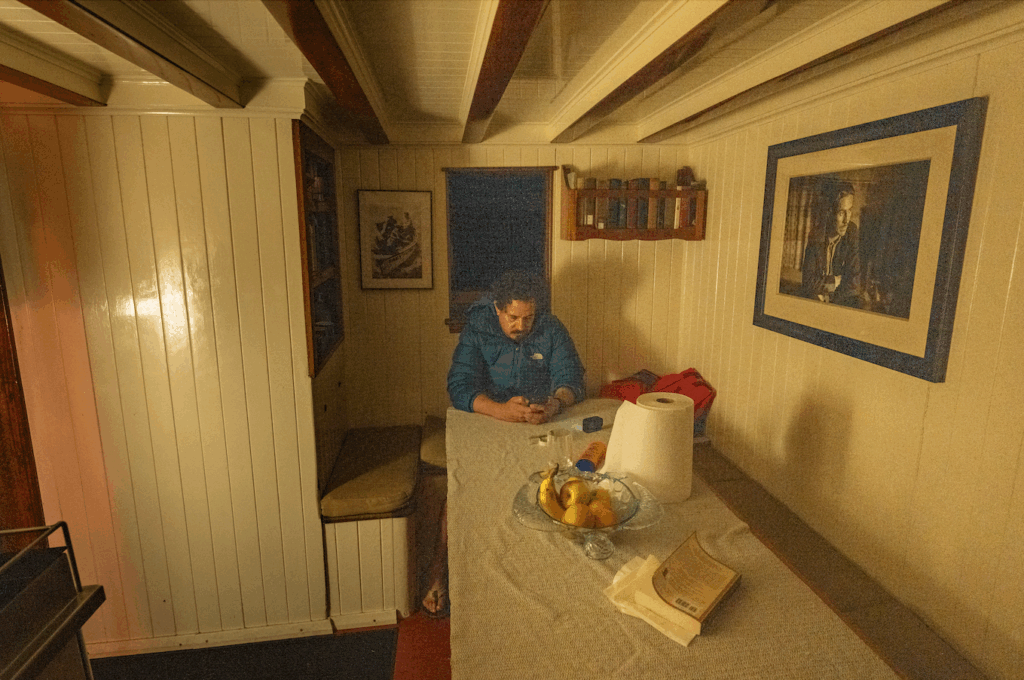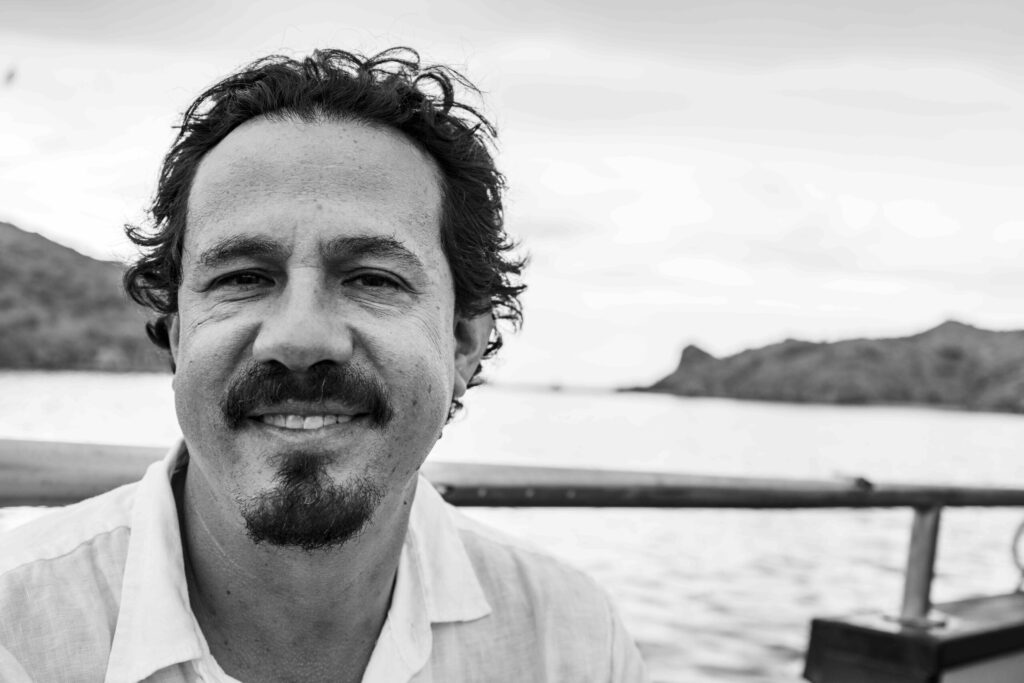
By Andrew Beahrs
When I spoke with ocean biodiversity genomics researcher Adrian Munguia Vega about the ten days he spent cruising the Gulf of California on board the Western Flyer, he talked first about how much he loved the people he’d met there, from the captain to the crew to the scientists on board. He returned again and again to how much it meant to see the passion that people brought to their work. But best of all, he thought, was the simple fact that the crew was willing to stop in the middle of a channel at 3 AM to take a biological sample.
“That’s very difficult, getting out to certain parts of the channel at that time,” he said with a laugh. “Just being able to stop and deploy something to a thousand meters or 800 meters and take a sample—that doesn’t happen very often, just being able to go at night and just discover whatever crazy animals or plankton or whatever was happening in the middle of the night.”
Did any such encounters stand out to him? “Yes! We were in the Canal de Ballenas between Bahia de Los Angeles and Angel de la Guarda. I think this is the most productive region of the Gulf based on historic satellite images and chlorophyll concentration. Almost no matter the time of the year, you have high productivity and high chlorophyll concentration in this channel because of upwelling—by the tides, but also by the wind, so it doubles up in a very narrow, deep channel, and that creates a lot of productivity.
“So, we were on the way to Puerto Refugio and stopped at 1 AM and took a sample. And we could see that the wake of the Western Flyer was glowing blue, and then we continued on, we were seeing huge schools of fish that would swim away [as we approached], and every fish moving would glow. It was like fireworks in the water. And then there were maybe twenty dolphins eating the fish, glowing like torpedoes, and they would go and chase the fish and then come back to the group.” The whole party found themselves unable to return to their bunks, transfixed by the glowing of the ocean in the black night.
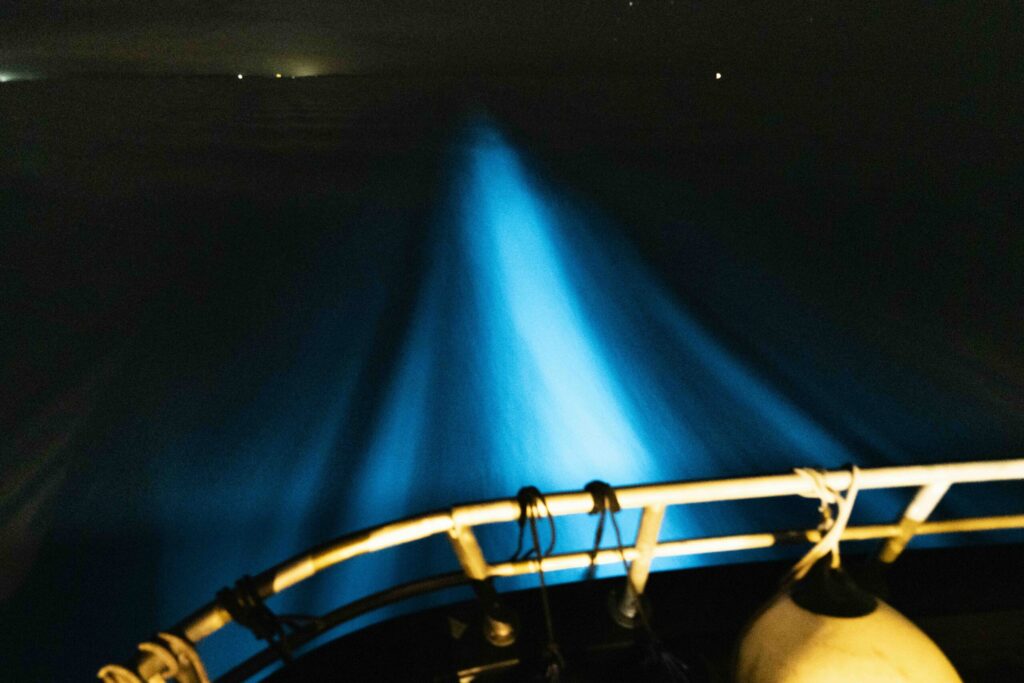
When Steinbeck and Ricketts sailed on the same vessel, they were of course aware that the waters below were teeming with life:
The abundance of life here gives one an exuberance, a feeling of fullness and richness. The playing porpoises, the turtles, the great schools of fish which ruffle the water surface like a quick breeze, make for excitement. Sometimes in the distance we have seen a school of jumping tuna, and as they threw themselves clear of the water, the sun glittered on them for a moment. The sea here swarms with life, and probably the ocean bed is equally rich. Microscopically, the water is crowded with plankton. This is the tuna water—life water…there was food everywhere. Everything ate everything else with a furious exuberance.
The sea here swarms with life, and probably the ocean bed is equally rich. There’s longing in that line, I think; the curious pair would doubtless have given a great deal to be able to explore the pelagic and benthic zones as Adrian can aboard the Flyer, using sensors that allow him to determine just what kinds of creatures might be swimming or drifting or scuttling through the water and along the bottom below.
“We have very good data about the biodiversity around the Gulf in the rocky reefs and [other] places where we can dive to 30 meters,” he told me. “But you know, to go 200 meters, or 500 meters deep—it’s not very easy. So, you have very limited data from these environments.”
That’s why, for the better part of a decade, Adrian has focused on analyzing the environmental DNA (eDNA) found at various depths in the water column. “It’s [both] easy and non-invasive,” he explained. “We don’t need to capture or restrain any animal; we just collect water samples, and that’s a very convenient way to sample the diversity present in a marine ecosystem. And the Gulf of California reaches a depth of almost four kilometers—there’s a lot of volume, and a lot of space. And water sampling has allowed us to monitor biodiversity used by traces of DNA that stay in the water because of the interaction of organisms.”
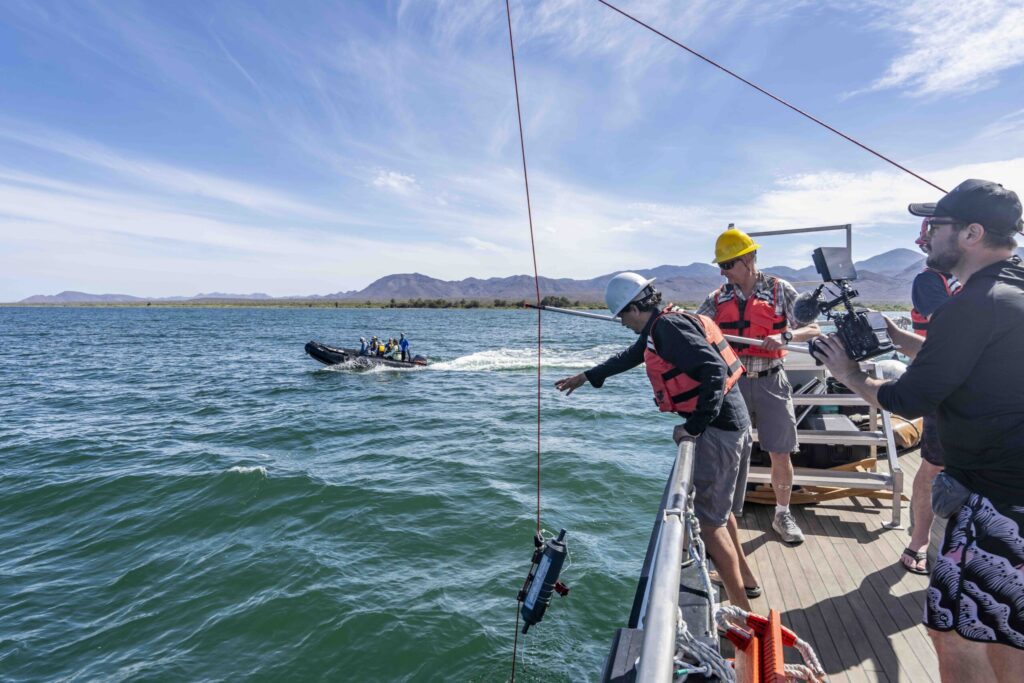
Adrian filters the water, collects DNA molecules, and analyzes them for whatever groups of organisms he’s interested in. It could be “the entire tree of life,” as he put it, as they try to determine the range of species inhabiting an area—or it could be a subset like crustaceans, fish, or marine mammals. Then they compare the DNA samples against examples from around the world, gradually working on a “three-dimensional biodiversity map” of what species are present at different depths—especially below the thirty or forty meters of water column readily accessible to human divers.
To Adrian, it’s both a thrilling and daunting undertaking, akin to exploring all the life at the top of a tall mountain, after knowing nothing other than what lives around the base. But unlike a high mountain, which might have less life in the upper atmosphere, eDNA results show that biodiversity might increase in deep, far offshore coastal waters. That, he told me, is something of a surprise.
“There’s so much volume and productivity and things going on there,” he said. “There’s a biodiversity peak in the deep ocean, and here in the Gulf, we are seeing that areas between 150 and 200 meters are as diverse as the ones in the shallows. But they contain completely different sets of species. So it’s like if you are climbing a mountain, and then you see maybe some jungle near the base, and then you transition into a cloud forest or something like that. It’s a completely different community, different plants, different animals.”
And with the gear on the Flyer he could do more than confirm the presence of a deep species—he could observe it in real time. Adrian and the team sank cameras that captured shots of Humboldt squid even as they were scooping up signs of life 500 or 600 meters down. Even for someone with Adrian’s background, the experience was thrilling.
“You know, there are these ecosystems that we don’t know much about, and that we sometimes imagine are empty—ah, well, like there’s not much going on there. There’s a lot going on! And every time you deploy something, you get a new result and new information, and maybe a new species that you didn’t know was there. For me, that’s the most exciting part. It’s just beautiful.”
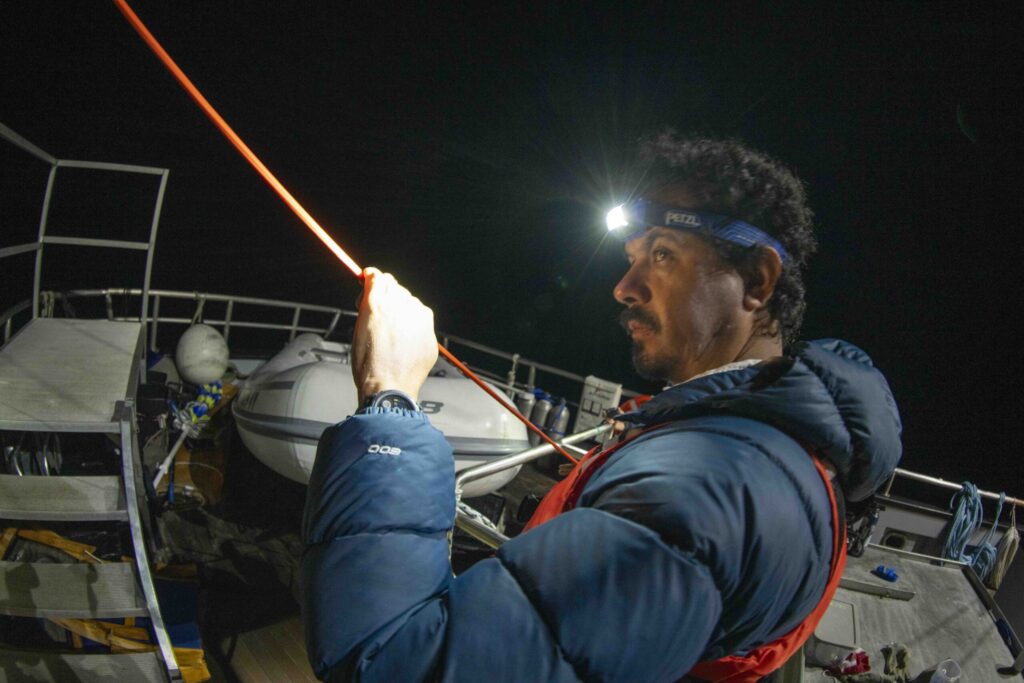
But all the care in the world can’t make the technique foolproof. On multiple occasions, for example, Adrian has detected the unmistakable signature of salmon in the Gulf, which—to be perfectly clear—has no living salmon at all. What it does have is sailboats and other touring vessels—boats that carry frozen or canned salmon, salmon that sometimes inevitably ends up in the water of the Gulf along with chicken, avocado, tomatoes, and other foodstuffs Adrian is able to identify.
Using eDNA is a starting point, then, can sometimes be intensely revealing, but like any tool it must be used judiciously and with a healthy degree of skepticism. Fortunately, Adrian’s curiosity is paired with caution and rigorous attention to detail. The combination allows him to examine life in a Gulf that can seem both timeless and in the midst of rapid change.
“Species are moving towards the northern part of the Gulf because of climate change. There’s a tropicalization of submarine fish, and [other] species are adapting, moving to deeper layers because the shallow waters are getting too hot, or they don’t have enough oxygen…things are moving north, they’re moving deeper. This has implications, not only for biodiversity and resources like Marine Protected Areas, but also for small scale fisheries in the region that might have to adapt also to all these changes, understanding how deep they’ll be fishing, and which novel species might [appear]”.
It’s an ambitious, long-term project, one that hearkens back to Ed Rickett’s pioneering work on the sardines of Monterey Bay—and to the legendary biologist’s time on the Western Flyer exactly eighty-five years ago.
